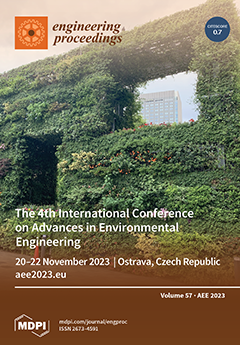This article deals with the use of ash from biomass burning for the remediation of thermally active dump in Heřmanice, Czech Republic. Nowadays, various chemical, physical, or biological methods of remediation are used for the remediation of dumps. The authors discuss the complex
[...] Read more.
This article deals with the use of ash from biomass burning for the remediation of thermally active dump in Heřmanice, Czech Republic. Nowadays, various chemical, physical, or biological methods of remediation are used for the remediation of dumps. The authors discuss the complex use of ash from biomass as a possibility for biological remediation of the Heřmanice dump. The main advantage of obtaining ash when burning biomass is primarily the fact that it is a renewable energy source, which produces electricity and large amounts of ash, which can be used, for example, for the remediation of the Heřmanice dump. Tailings are characterized by their acidity, while fly ash is characterized by high alkalinity. This study deals with which ratio (tailings:ash) would achieve the necessary neutral values in order to prevent the release of heavy metals into the surroundings of the Heřmanice dump. The value of the active soil reaction (pH/H
2O), the value of the exchange soil reaction (pH/CaCl
2), the value of hydrolytic acidity (H
a), together with the value of soluble salts in the tailings, i.e., electrical conductivity, were also studied. Based on the obtained results, it can be concluded that the addition of biomass combustion ash had a positive effect on the pH value of the tailings. Based on this fact, Al
3+ is excreted more slowly into the environment. A higher content of aluminum is toxic to plants, while in a smaller amount, its content is necessary and at the same time an important factor in the process of plant growth. The mixing of alkaline ash with unburned surface tailings from the thermally active Heřmanice dump significantly influenced its acidity, which had a positive effect on increasing the active and exchange acidity.
Full article




